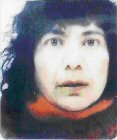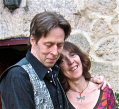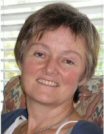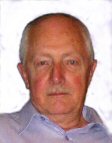
 The Autumn 2012 George Borrow Bulletin is now out (Series 2,
No. 5).
The Autumn 2012 George Borrow Bulletin is now out (Series 2,
No. 5).
Members received their copy during December 2012.
We’re continuing with abstracts of the main articles and also giving some information on the contributors.
We hope to expand this area in future.
The current issue also has some splendid colour photographs/prints relating to the Wiltshire episodes. This includes the one of Quicksilver being attacked by the lioness at Winterslow on 20th October 1816.
The next edition of the George Borrow Bulletin is being prepared and should be out in Spring 2013.
George Borrow Bulletin 2nd Series nº 5 (Autumn 2012) |
||
News |
||
2 |
|
Membership of the Society; obituary |
2 |
|
Activities of the Executive Committee |
4 |
|
Recent Events |
Articles |
||
The Borrow Family Tree: |
||
6 |
Venturas, Graciella |
The Notable Nineteenth Century Borrows, descendants of the Trethenni |
13 |
Missler, Peter |
Captain George Henry Borrow |
19 |
Laurie, Kedrun |
1956, René Fréchet, Louis Aragon and post-war French interest in Borrow, Part 2 |
43 |
Sanderson, H. K. St. J. |
A Voice from the Past, two essays on Borrow |
Notes and Queries |
||
52 |
Price, David |
The Rev. Francis Cunningham |
57 |
Ridler, Ann M. |
A postscript on Ch. 60 of Lavengro |
58 |
Hentges, John |
The man who outsold Dickens? |
59 |
Hentges, John |
58 Jermyn Street |
60 |
Able, Susan |
George Borrow: Does he still haunt the Oulton Estate? |
61 |
Burleigh, Richard |
George Borrow in Cornwall |
62 |
Pritchard, Terry |
What was the site of Borrow’s meeting on the Welsh border with Jasper Petulengro? |
63 |
Hopkins, Simon |
George Borrow’s Hebrew shekel |
Reviews |
||
66 |
Rawbone, Michael |
I’m a Romany Rai, CD reviewed |
68 |
Bainbridge, John |
Robert Macfarlane, The Old Ways: A Journey on Foot, reviewed |
69 |
Murphy, Martin |
George Borrow, La Biblia en España. Traducido por Manuel Azaña. Introducción de Alberto González Troyano, reviewed |
70 |
Skillman, Michael |
Tom Fort, The A303 Highway to the Sun, reviewed |
Other |
||
72 |
|
Publications |
75 |
|
Press Cuttings |
76 |
|
Borrow On-line |
79 |
|
A Relevant TV Programme |
80 |
|
An Exhibition in Paris |
80 |
|
Borrow Portrayed |
Report and Proceedings of The George Borrow Society’s meeting held at Salisbury, Wiltshire, 13–15 April 2012 |
||
82 |
Rostron, Ann, and Fielder, Tony |
Report on the weekend |
89 |
Skillman, Michael |
Borrow in Wiltshire, with a note on mail coaches |
96 |
|
Back Numbers of Bulletins, Binders and Proceedings |
 Graciella Venturas was born and
grew up in Rhodesia during the sanctions era and Rhodesian Bush
War. She studied Law and after moving to South Africa acquired a
third Law degree, a Master of Laws, whilst working as a Tax
Consultant. Her mother was a descendant of the Borrows of
Trethinnick. Her interest in Human Rights Law has kept her in
close touch with Zimbabwe’s struggle to define the rule of
law, peculiarly locked in a state of legislative emergency for 60
years. Currently, she’s writing a faction novel in which
Captain H.J Borrow appears as a real life character acquainted
with Frederick Courteney Selous, used by Rider Haggard as a model
for Alan Quartermain. She is also involved in original research
into medieval history, an era which provides an entertaining
comment on tax law, commencing with the ultimate totting up of
the Domesday Book. One of the principal medieval tax collectors
participates as a character in her novel.
Graciella Venturas was born and
grew up in Rhodesia during the sanctions era and Rhodesian Bush
War. She studied Law and after moving to South Africa acquired a
third Law degree, a Master of Laws, whilst working as a Tax
Consultant. Her mother was a descendant of the Borrows of
Trethinnick. Her interest in Human Rights Law has kept her in
close touch with Zimbabwe’s struggle to define the rule of
law, peculiarly locked in a state of legislative emergency for 60
years. Currently, she’s writing a faction novel in which
Captain H.J Borrow appears as a real life character acquainted
with Frederick Courteney Selous, used by Rider Haggard as a model
for Alan Quartermain. She is also involved in original research
into medieval history, an era which provides an entertaining
comment on tax law, commencing with the ultimate totting up of
the Domesday Book. One of the principal medieval tax collectors
participates as a character in her novel.
 Peter Missler was born in 1959 in
Amersfoort (The Netherlands). He briefly studied Philosophy at
the University of Utrecht before moving to Paris, where he mainly
exercised as bohemian. After four years as bookseller,
house-cleaner, electrician, hotel attendant and metro-busker, he
returned to Holland to earn a degree in Egyptology from the
University of Leiden. In 1993 he moved to Granada, Spain, and two
years later to Santiago de Compostela. He is a member of the
George Borrow Society and a regular contributor to the George
Borrow Bulletin. These Bulletin articles resulted in
two book-sized studies: A Daring Game in 2009 and The
Treasure Hunter of Santiago in late 2010. Peter Missler
presently lives in Brion, west of Santiago, with his wife
Palmyra, their son Yasin and the Homeric sheep-dog Argos.
Peter Missler was born in 1959 in
Amersfoort (The Netherlands). He briefly studied Philosophy at
the University of Utrecht before moving to Paris, where he mainly
exercised as bohemian. After four years as bookseller,
house-cleaner, electrician, hotel attendant and metro-busker, he
returned to Holland to earn a degree in Egyptology from the
University of Leiden. In 1993 he moved to Granada, Spain, and two
years later to Santiago de Compostela. He is a member of the
George Borrow Society and a regular contributor to the George
Borrow Bulletin. These Bulletin articles resulted in
two book-sized studies: A Daring Game in 2009 and The
Treasure Hunter of Santiago in late 2010. Peter Missler
presently lives in Brion, west of Santiago, with his wife
Palmyra, their son Yasin and the Homeric sheep-dog Argos.
 Dr Kedrun Laurie was formerly
Assistant Curator of the Geffrye Museum in London, specialising
in the history of interiors and costume. She subsequently worked
for some years as a consultant on the restoration of historic
parks and gardens. She received her doctorate in English
Literature from King’s College London in 2003. Her thesis,
entitled ‘“If I had Wings”: country
writers and the claims of conservation’, included a chapter
on George Borrow. She now works as an independent scholar in
Belgium with a particular interest in the art and literature of
the long nineteenth century.
Dr Kedrun Laurie was formerly
Assistant Curator of the Geffrye Museum in London, specialising
in the history of interiors and costume. She subsequently worked
for some years as a consultant on the restoration of historic
parks and gardens. She received her doctorate in English
Literature from King’s College London in 2003. Her thesis,
entitled ‘“If I had Wings”: country
writers and the claims of conservation’, included a chapter
on George Borrow. She now works as an independent scholar in
Belgium with a particular interest in the art and literature of
the long nineteenth century.
 Hello. I am Mike Skillman. I first became interested in
George Borrow back in the 1980s when looking for books on Gypsies
in our local library. There was only one: a tiny copy of The
Romany Rye. I was immediately hooked. So I bought
Lavengro, and then Wild Wales. My wife and I began
to visit many of the places mentioned in the latter and one day
in Llangollen I spotted what must have been the house Borrow
stayed in whilst there. On being invited in by the owner I was
told about the George Borrow Society and now I am the Membership
Secretary.
Hello. I am Mike Skillman. I first became interested in
George Borrow back in the 1980s when looking for books on Gypsies
in our local library. There was only one: a tiny copy of The
Romany Rye. I was immediately hooked. So I bought
Lavengro, and then Wild Wales. My wife and I began
to visit many of the places mentioned in the latter and one day
in Llangollen I spotted what must have been the house Borrow
stayed in whilst there. On being invited in by the owner I was
told about the George Borrow Society and now I am the Membership
Secretary.
The note traces the record of nineteenth-century descendants of Trethinnick Borrows whose lives attracted the notice of historians. It examines in particular the descendants of one of Captain Thomas Borrow’s twin brothers, John. John Borrow’s son and grandson participated respectively in the economic and religious history of Cornwall, whilst the life and death of Captain Henry John Borrow, his great-grandson, has been dramatised and memorialised in the nineteenth and the twentieth century and received some contentious mention in the twenty-first century. He was involved in the founding of the southern African nation Rhodesia, present day Zimbabwe. It also considers why these cousins, one a resident of Truro and major shareholder of the second largest producer of Arsenic, failed to make contact with Borrow during his 1854 visit to Cornwall.
The note tells the life story of Captain George Henry Borrow (1921–1944), namesake and distant cousin of the author of Lavengro and The Bible in Spain, who fought with the Chindits in Burma during WWII, served as ADC to General Charles Orde Wingate, and died in the same plane crash as his superior on 24 May 1944.
Paris 1956, the place and the year not only in which René Fréchet published his Borrow monograph but also in which the Communist poet Louis Aragon (1897–1982) alluded to Borrow in Le Roman inachevé. The events of 1956, in particular Khrushchev’s exposure of Stalin’s purges, made Aragon reconsider Borrow’s significance. The Bohemianism his works had inspired in him as a youth, once rejected, seemed valid again as the excesses of Communist doctrine became clear.
Aragon uses Gypsies throughout his book as emblems of individual freedom or of free speech itself. I discuss by means of textual analysis to what extent this discourse and another, that surrounding religious belief, derive from Borrow.
I suggest that Aragon’s interest in Borrow originated with Nancy Cunard, his lover from 1926–8. Finally I compare Aragon’s work on Borrow to that of René Fréchet, whose book he seems almost conclusively to have read.
Some members heard my recent talk to the Society at Salisbury about Lavengro’s journey from London to Stonehenge. His journey would inevitably have taken him over much of the ground now covered by the A303, a road very familiar to me. The old road in his day was one of two main mail coach routes from London to Exeter. Of all Borrow’s books Lavengro is the only one having a chapter mentioning places in Wiltshire so, of course, I was especially interested in that one. Unfortunately there isn’t a great deal of information in it but there was enough to give me material for my talk and perhaps, more importantly, to give me food for thought. Why did Lavengro head west and then, later, north? I hope in my talk I answered the former but the latter is still perhaps a mystery.